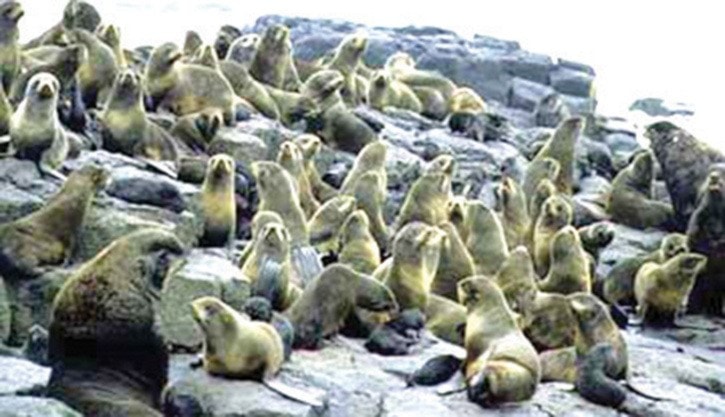In the latter decades of the 19th century, Victoria’s harbour was home to a variety of industries. It would have been a pungent place, filled with the olfactory presence of livestock and fish canning, the opium factories of Chinatown, the fumes and runoff of various factories and, perhaps most malodorous, the scent carried by predatory ships that stalked the rich waters of B.C. and relentlessly harvested sea-going mammals.
I have already written on the whaling trade of B.C., but perhaps even less glamorous was the sealing industry.
Our waters teem with marine wildlife including several species of seals and sea lions. Indeed, this is what motivated the Hudson’s Bay Company to establish Fort Victoria in 1843. At that time there was an enormous market for the pelts of sea otters in Europe and China.
It didn’t take long to decimate the population, which was essentially extinct in B.C. by 1929.
Following the government release of 89 otters in the early 1970s they have made a remarkable recovery, though still have not reclaimed the full range of their former territory and are still a species of “special concern.”
To fill the void left by the diminishing sea otter population, early Victorians turned to another marine mammal: the fur seal. Much larger than the harbour seals we see at Fisherman’s Wharf, northern fur seals also have very thick pelts which fetched a steep price in Europe.
By the 1860s, several fast-moving schooners based out of Victoria were trolling the migratory waters off Vancouver Island through which the seals passed on their annual path up to Alaska. By 1882 there were 13 of these schooners bringing in thousands of pelts each year.
In the mid 1880s a kind of seal bonanza took place. The fur seals passing Vancouver Island were heading to their breeding grounds in the Pribilof Islands, off the southwest coast of Alaska. There, they would haul out on land and could be easily and brutally clubbed to death.
Millions of seals gathered each year, and huge rush of sealers made their way to the north. The U.S. government did not react favourably to the hundreds of foreign hunters from Canada, Russia and Japan who arrived on their shores and made off with their valuable commodity.
American warships were dispatched to patrol the area, and so foreign ships relied on pelagic (open sea) hunting instead. The Alaska Commercial Company, which had an American monopoly on the seal trade, protested that the foreign hunters were dramatically reducing the seal population, and the result was that several Canadian vessels (including one captained by J.D. Warren, who was once the captain of the famous S.S. Beaver) were seized, and their crews thrown in jail. Canadian hunters even faced gunfire from American warships.
This international conflict was escalating fast. The Americans claimed to control all of the Bering Sea, not just the traditional three nautical miles of territorial waters (today it is 12 miles). They justified this claim with the fact that Russia had controlled the entire Bering Sea, and that when the U.S. purchased Alaska from them in 1867 that control had passed to them.
Britain challenged this view and an international court found against the U.S. and awarded damages to the owners of seized vessels.
In the meantime, the population of fur seals was plummeting. In 1897 nearly 100,000 pelts passed through Victoria, where almost 100 sealing schooners were at anchor. Local sealers gained notoriety for their daring deeds- including the famous “Flying Dutchman” Gustav Hansen.
At sea, sealers were supposed to use harpoons to kill their prey, and haul it onto the boats where they were stripped of their skin and fur. In reality, however, many used guns instead. Two out of every three seals killed this way would sink before they could be retrieved and brought on deck. The wastage was vast and horrifying, but it seemed like the supply of seals was endless.
By the turn of the century, only about 200,000 fur seals remained out of an estimated original population of two million.
With the species facing decline, in 1911 the historic North Pacific Fur Seal Convention was held and the pelagic hunt was outlawed in exchange for a small percentage of the rights to hunt on land.
This convention was the first international treaty designed to deal with the conservation of a species and it paved the way for future agreements like the Fur Seal Act of 1966.
Today the population is somewhat recovered with approximately 1.1 million seals that make their way along the B.C. coast. They are still considered to be a “threatened” species, and the population is actually declining on the Pribilof Islands, possibly due to limited availability of prey which is impacted by commercial fishing and climate change.
•••
Kate Humble is a Victoria historian.
